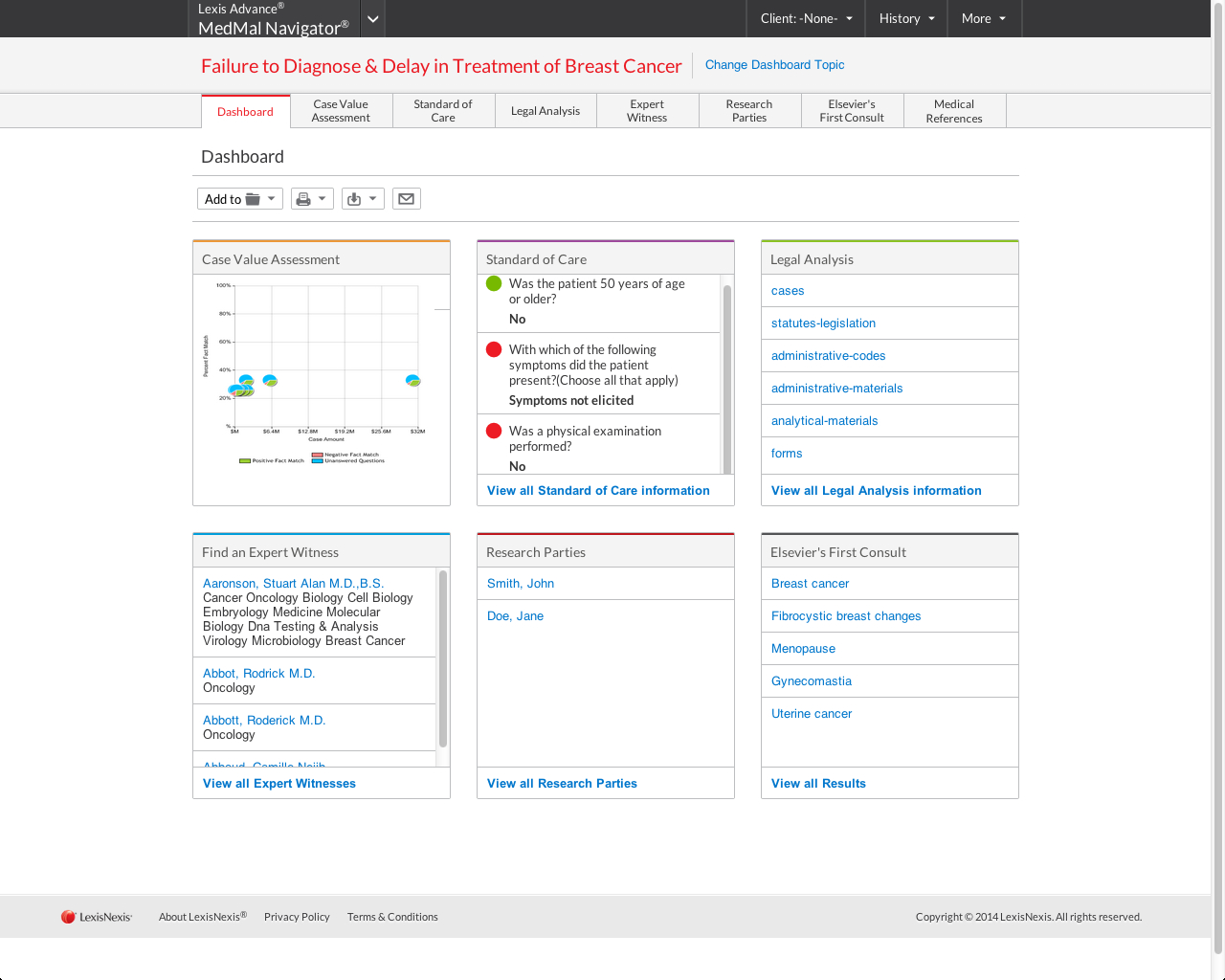
LexisNexis Lex Machina: Complete Buyer's Guide
Transforming litigation strategy through AI-driven insights
LexisNexis Lex Machina is a specialized litigation analytics platform that transforms legal strategy through AI-driven insights into judge behaviors, case outcomes, and competitive intelligence. As part of the broader LexisNexis legal technology ecosystem, Lex Machina delivers predictive litigation analytics that extend beyond traditional legal research to provide strategic decision-making capabilities for complex litigation scenarios.
Market Position & Maturity
Market Standing
LexisNexis Lex Machina operates from a position of established market strength within the litigation analytics segment, leveraging the broader LexisNexis legal technology ecosystem's market presence and customer relationships [142][164].
Company Maturity
The platform's integration within LexisNexis's broader legal technology suite, established customer base, and proven track record in litigation analytics delivery [142].
Industry Recognition
Industry recognition stems from LexisNexis's broader market presence and established relationships within the legal technology sector [142].
Longevity Assessment
Long-term viability appears strong given LexisNexis's corporate stability and continued investment in legal technology innovation [142].
Proof of Capabilities
Customer Evidence
Customer evidence demonstrates measurable improvements in litigation efficiency and strategic decision-making, with users reporting 30% reduction in research time and 20% increase in successful case outcomes [142][164].
Quantified Outcomes
A mid-sized law firm case study documents a 25% increase in case win rates within the first year of implementation [142].
Market Validation
Market validation includes the platform's position within the established LexisNexis legal technology ecosystem and proven track record in litigation analytics delivery [142][164].
Competitive Wins
Competitive wins appear to center on the platform's integration advantages and comprehensive database coverage [142][164].
AI Technology
Lex Machina's AI-driven analytics engine processes comprehensive litigation data to deliver predictive insights into judge behaviors, case outcomes, and competitive intelligence [142][164].
Architecture
The platform's technical architecture integrates seamlessly with LexisNexis's broader legal technology ecosystem [142][164].
Primary Competitors
Primary competitors include Thomson Reuters Westlaw Edge and other established legal analytics platforms [142][164].
Competitive Advantages
Competitive advantages center on integration with the broader LexisNexis legal technology ecosystem, comprehensive database coverage, and established market presence [142][164].
Market Positioning
Market positioning focuses on specialized depth in litigation analytics rather than broader legal AI applications [142][164].
Win/Loss Scenarios
Win scenarios favor organizations with existing LexisNexis ecosystem investment, significant litigation practices, and commitment to analytics-driven legal strategy [142].
Key Features

Pros & Cons
Use Cases
Featured In Articles
Comprehensive analysis of AI Legal Analytics for Legal/Law Firm AI Tools for Legal/Law Firm AI Tools professionals. Expert evaluation of features, pricing, and implementation.
How We Researched This Guide
About This Guide: This comprehensive analysis is based on extensive competitive intelligence and real-world implementation data from leading AI vendors. StayModern updates this guide quarterly to reflect market developments and vendor performance changes.
129+ verified sources per analysis including official documentation, customer reviews, analyst reports, and industry publications.
- • Vendor documentation & whitepapers
- • Customer testimonials & case studies
- • Third-party analyst assessments
- • Industry benchmarking reports
Standardized assessment framework across 8 key dimensions for objective comparison.
- • Technology capabilities & architecture
- • Market position & customer evidence
- • Implementation experience & support
- • Pricing value & competitive position
Research is refreshed every 90 days to capture market changes and new vendor capabilities.
- • New product releases & features
- • Market positioning changes
- • Customer feedback integration
- • Competitive landscape shifts
Every claim is source-linked with direct citations to original materials for verification.
- • Clickable citation links
- • Original source attribution
- • Date stamps for currency
- • Quality score validation
Analysis follows systematic research protocols with consistent evaluation frameworks.
- • Standardized assessment criteria
- • Multi-source verification process
- • Consistent evaluation methodology
- • Quality assurance protocols
Buyer-focused analysis with transparent methodology and factual accuracy commitment.
- • Objective comparative analysis
- • Transparent research methodology
- • Factual accuracy commitment
- • Continuous quality improvement
Quality Commitment: If you find any inaccuracies in our analysis on this page, please contact us at research@staymodern.ai. We're committed to maintaining the highest standards of research integrity and will investigate and correct any issues promptly.